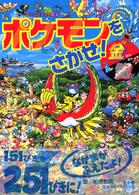Full Description
As compared to adult-onset spinal cord injury (SCI), individuals with childhood-onset SCI are unique in several ways. First, as a result of their younger age at injury and longer lifespan, individuals with pediatric-onset SCI are particularly susceptible to long-term complications related to a sedentary lifestyle, such as cardiovascular disease, and overuse syndromes, such as upper extremity pain. Second, they experience complications, such as scoliosis and hip dysplasia, which may affect them both during childhood and as adults.
Persons with pediatric-onset SCI also have unique developmental needs. They experience the typical ongoing challenges of each developmental stage (e.g., childhood, adolescence) as well as changes owing to their SCI. Finally, individuals with pediatric-onset SCI face health system discontinuities, such as the transition from pediatric medical care to adult care and the transition from parent-controlled health care to self-management. This book is intended for clinicians of all disciplines who may only occasionally care for youth with SCI to those who specialize in SCI as well as clinical and basic researchers in the SCI field. Topics covered include new developments in pediatric SCI research, current standards for optimal care, areas lacking scientific evidence, and recommendations for clinical practice and future research.
Contents
Preface
Section 1: Overview (Section Editor: Zebracki)
Life with a SCI: A personal reflection
Epidemiology
Life care planning
Assessment of SCI
Section 2: Early Management of the SCI (Betz)
Pathophysiology of Pediatric SCI
Acute Management
Principles of Treatment of Spine Stability in Children with SCI
Section 3:Unique Issues in Pediatric SCI (Vogel)
Non-Traumatic SCI
High Cervical Injuries
Dual Diagnoses: TBI
Section 4: Medical Management (Vogel)
Neurogenic Bladder and Bowel: Assessment, Management and Outcomes
Spasticity
Autonomic Dysfunction
Medical Complications and Management
Skin Integrity
Metabolic Complications and Nutrition
Pain: Overview, Assessment and Treatment
Section 5: Neuro-musculoskeletal management (Betz)
Orthopaedic complications
Neuromuscular Scoliosis: Overview, Management and Outcome
Upper Extremity Function
Section 6: Physical Rehabilitation (Mulcahey)
Rehabilitation
Mobility for Children with SCI
Section 7: Psychosocial (Zebracki)
Education and Vocation
Emotional Impact and Functioning
Long-Term Outcomes
Recreation and Leisure Time
Section 8: Research Priorities and Future Directions (Mulcahey)
Biological interventions/ clinical trials
Neurological Recovery and Restorative Rehabilitation
Advances in imaging








